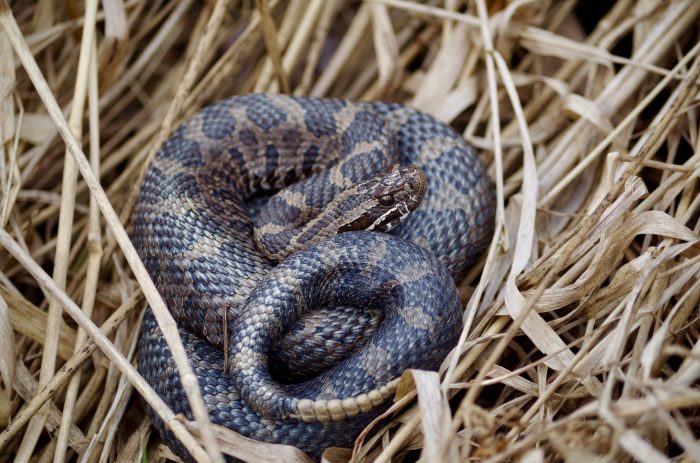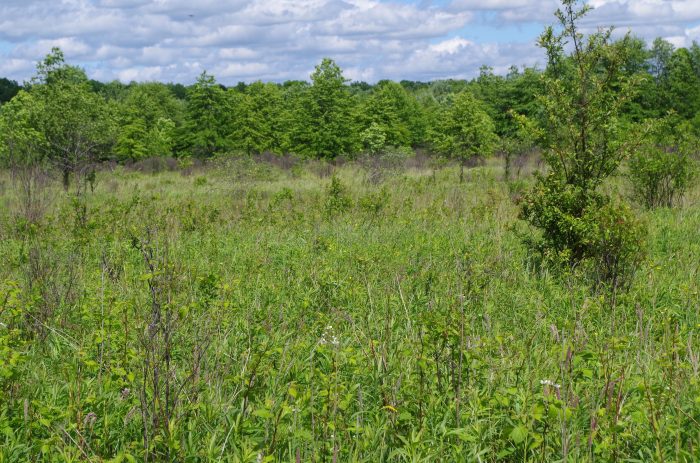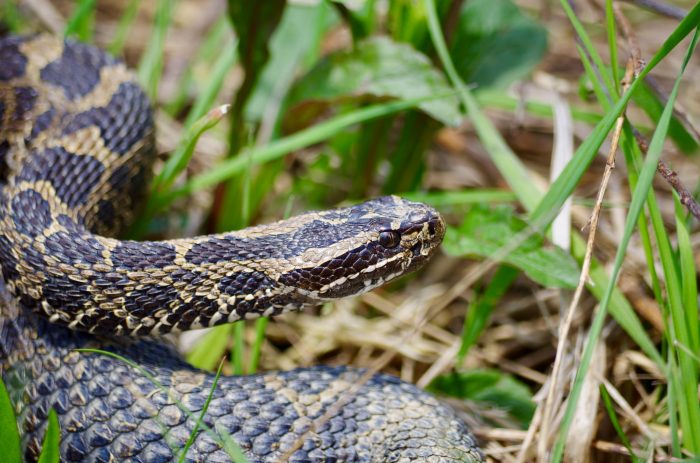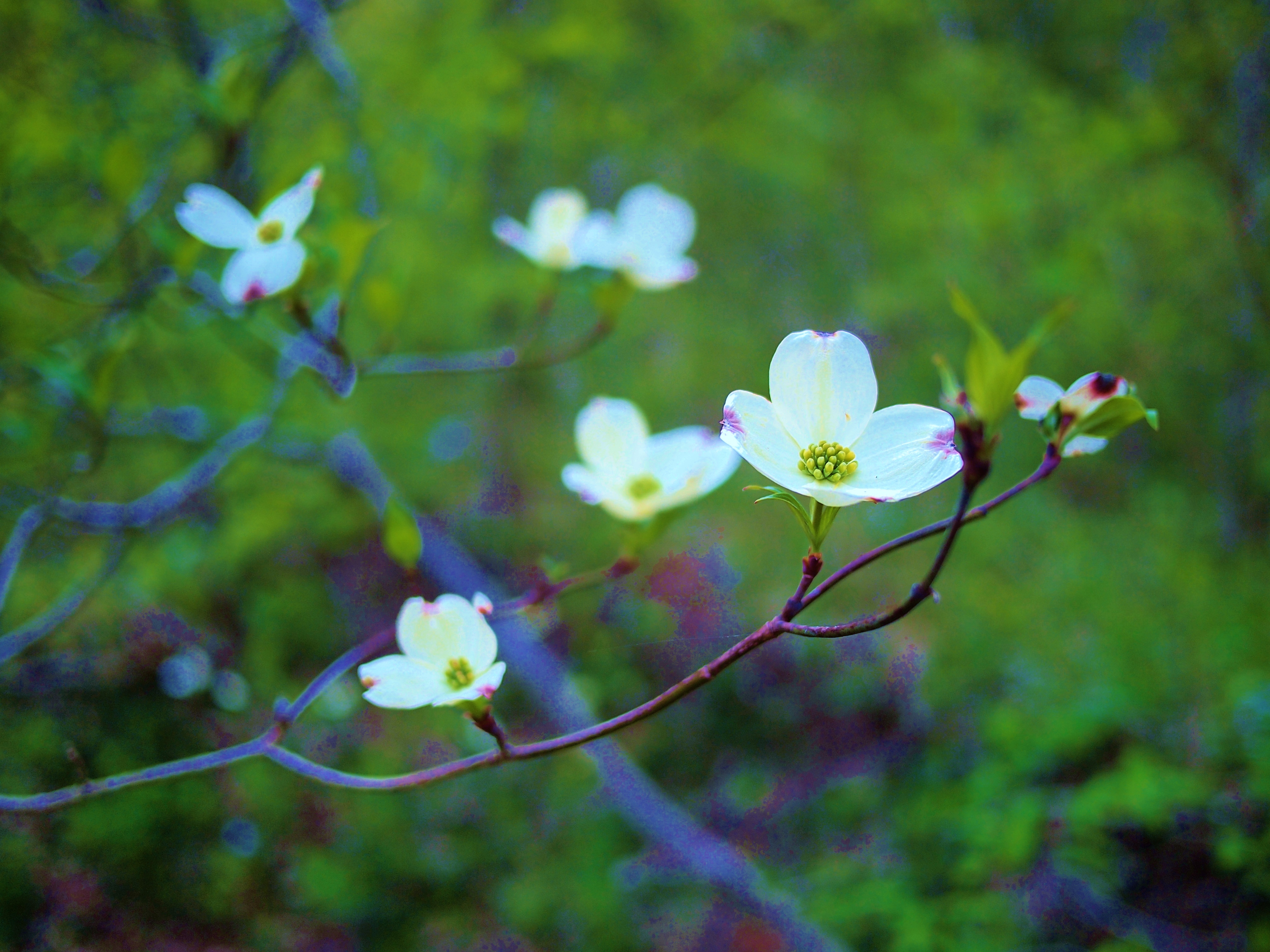
Regulatory Status
In late 2016, the U.S. Fish and Wildlife Service listed the Eastern Massasauga Rattlesnake (Sistrurus catenatus) as endangered under the Endangered Species Act. Although listed as endangered in Ohio since 1996, this decision affords the Massasauga federal protections related to direct harm to the species and its habitat. Threats to the persistence of the Massasauga are both natural and anthropogenic, including natural vegetative succession, habitat conversion and destruction, and human persecution. Due to federal listing and varying state protections across the range, both federal and state agency coordination may be required to complete your project or conduct conservation work. The experienced herpetologists at EnviroScience have federal and state scientific collection permits and are experts at surveying for Massasaugas and their habitats.
Species and Habitat Overview
U.S. Range: IA, IN, IL, NY, MI, MN, MO, OH, PA, and WI

Eastern Massasaugas occupy diverse wetland, wet meadow, forested wetland, marsh, and grassland habitats across their range. In Ohio, Massasaugas are most often associated with wet meadows and other shallow wetlands located adjacent to upland grassland and scrub-shrub habitats. In all instances, habitats represent a heterogeneous mix of vegetation structure, which affords opportunities for both basking and hiding. It is easiest to think of Massasauga habitat requirements as they relate to seasonal activity patterns. During the winter months (November – March), Massasaugas overwinter in crayfish burrows located in shallow marshes and wet meadows. In the early spring (late March/early April), Massasaugas emerge from hibernacula and over the next few weeks will shuttle in and out of overwintering hibernacula as temperatures fluctuate.
When the air temperatures are consistently higher than the subsurface temperature (late April – September), male and non-gravid female snakes move away from hibernacula and distribute throughout surrounding wetland and upland habitat in order to hunt, bask, and mate. Gravid females (those individuals carrying embryos) will often remain relatively sedentary, focusing on basking rather than other activities. In August, gravid females give birth to 4-14 neonate snakes, after which they may partake in distant foraging forays. In October, Massasaugas will return to overwintering hibernacula and remain there for the winter.
Eastern Massasauga Conservation Efforts

One of the greatest threats to Massasauga habitat is natural vegetative succession. Massasaugas occupy early successional wetlands and grasslands. Without active management or disturbance, these habitats begin a transition from open wetlands to thick scrub-shrub wetlands to forest. Historically, these habitats would have been maintained through events such as storms that knock down large trees, fires, and beaver activity. Contemporary management efforts attempt to mimic these natural events by cutting shrubs and trees and burning when possible.
Due to the potential impacts of these activities on Massasaugas, most management must occur during the winter months when Massasaugas are in hibernacula and the ground is frozen. Opportunities for management and restoration exist throughout the Massasaugas range, and these snakes are known to return to adjacent agricultural lands when restored or allowed to remain fallow. This fact provides opportunities for wetland mitigation that may benefit the Massasauga as well as many additional rare and unique species in Ohio.
If your project returns the potential occurrence of Eastern Massasaugas, the first step will be for a State Department of Natural Resources Approved Herpetologist to conduct a habitat survey. If suitable habitat is identified, a presence/absence and/or exclusion survey can be coordinated to assist with the timely project approval and completion. EnviroScience herpetologists can also conduct inventory and monitoring efforts for land managers interested in identifying, researching, or protecting these animals.
For more information on the Eastern Massasauga, assessment of its habitat, or presence surveys for your project, please contact one of our Herpetologists, Teal Richards-Dimitire () or Nicholas Smeenk ().


